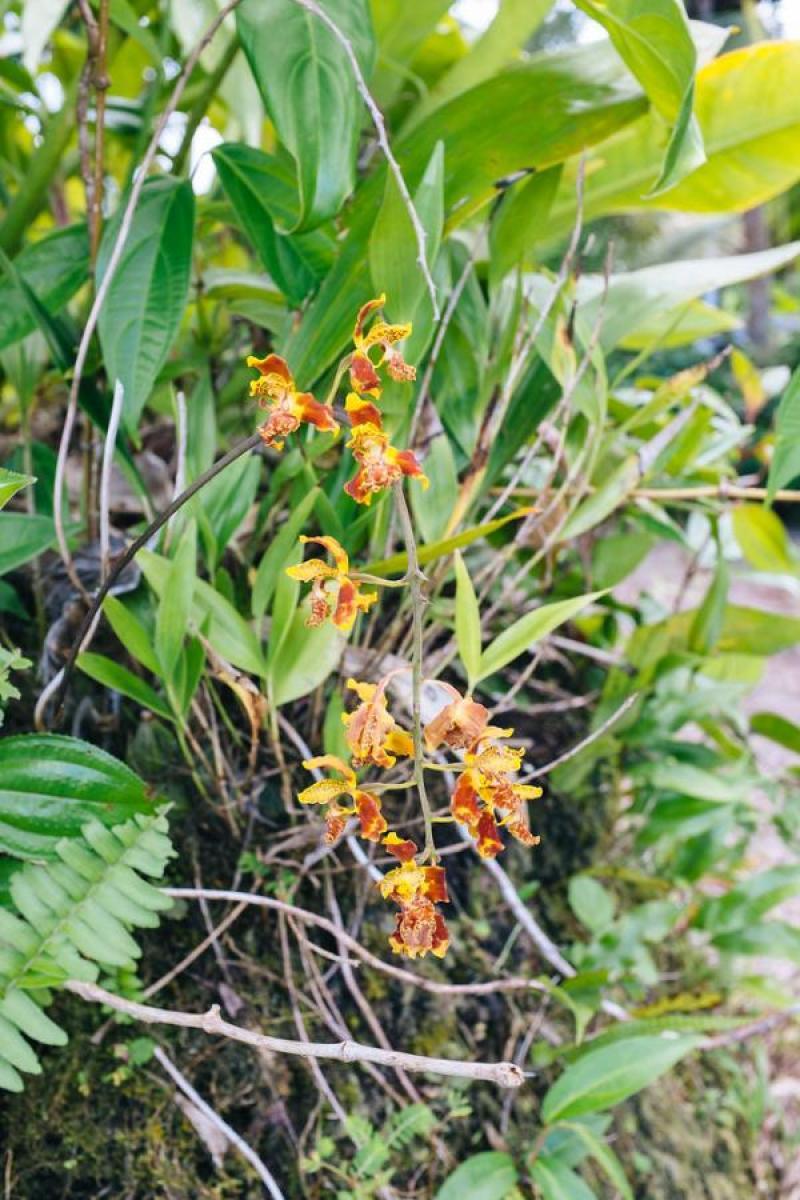Rudolfiella floribunda
Also known as: The Floriferous Rudolfiella or Lindleyella saxicola Bifrenaria saxicola Rudolfiella saxicola in the subfamily: Epidendroideae
Native to: Amazonas - Colombia Amazonas - Peru Departamento del Huila - Colombia Ecuador Loreto - Peru
General Information
The Floriferous Rudolfiella is a small sympodial warm to hot growing epiphytic or lithophytic orchid belonging to the sub family Epidendroideae native to Colombia, Peru and Ecuador.
Plant Description
Sympodial. Grows to 45cm. Each new growth has a single leathery rigid, elliptic, lance shaped, terete shaped leaf that grows to 9-45cm long. Pseudobulbs grow to 2-5cm
Flowers
Numerous blossoms appear during Summer and Spring
Blooming Season
- Spring
- Summer
Substrate(s)
- Coarse
- Charcoal
- Spaghnum Moss
- Perlite
Care Notes
These orchids like to be watered regulary, especially during warm weather, and prefer a well draining mix or also do well mounted, provided they can be watered daily or even many times a day.
These are quite a forgiving orchid, there are no special requirements to get this orchid to flower, just good care and consistent conditions. Larger plants may be more fussy and can react poorly to change; a poorly timed repotting, a pest infection or an unusually hot day can set them back for a couple of years. However, even plants that have been treated poorly can thrive, and if they are set back they often recover much stronger then they would otherwise be.
Climate
These orchids thrive in humid, cool, shady conditions with good airflow, they will be found under dense forest canopies where they will receive moderate sun exposure throughout the year.
When cultivated they will thrive in a cool, sheltered environment such as a shaded greenhouse, or if grown in cooler climates they can be grown in the garden in areas where they are protected from frost and receive shade throughout the year, though they may be able to tolerate some morning sun during winter.
Grows at low to high elevations. Rainfall ranges from 33mm to 109mm per day, heaviest in September and lightest in November. Temperature ranges from 18C to 31C, highest in March (21C to 31C) and lowest in January (18C to 29C).Watering
These orchids prefer a wet-dry cycle between waterings, they should be watered frequently but only when the moisture is approaching dryness, where the pot feels light and/or the media looks dry. Keep an eye on mounted orchids in warm weather as they may dehydrate quickly.
Fertiliser
Apply liquid based fertiliser per recommended directions. They can benefit from a high phosphate fertiliser leading up to flowering season, followed by a high nitrogen fertiliser when new growth appears, and a balanced fertiliser in other times. These orchids can also tolerate slow release fertiliser applied 1-2 pellets per cup (250ml) of media.
Apply fertiliser regularly at half strength year round. Use a high Nitrogen fertiliser during Spring and Summer. Use a high Phosphorous fertiliser during Summer. Reduce fertiliser when plant is dormant during Spring.Potting
These plants are quite forgiving and will do well repotted ever 2-3 years. The mix should be coarse, well draining, and allow space for air to move and for roots to grow.
Alternatively, these plants will also do well mounted to tree fern or cork slabs, or mounted to trees.
Best time for repotting or mounting the orchids is the end of winter when new growths start to appear. Avoid repotting during hot weather,
Use water retentive media such as moss to prevent roots from drying out quickly This plant does very well in baskets or suspended pots Repotting is best done annually.

